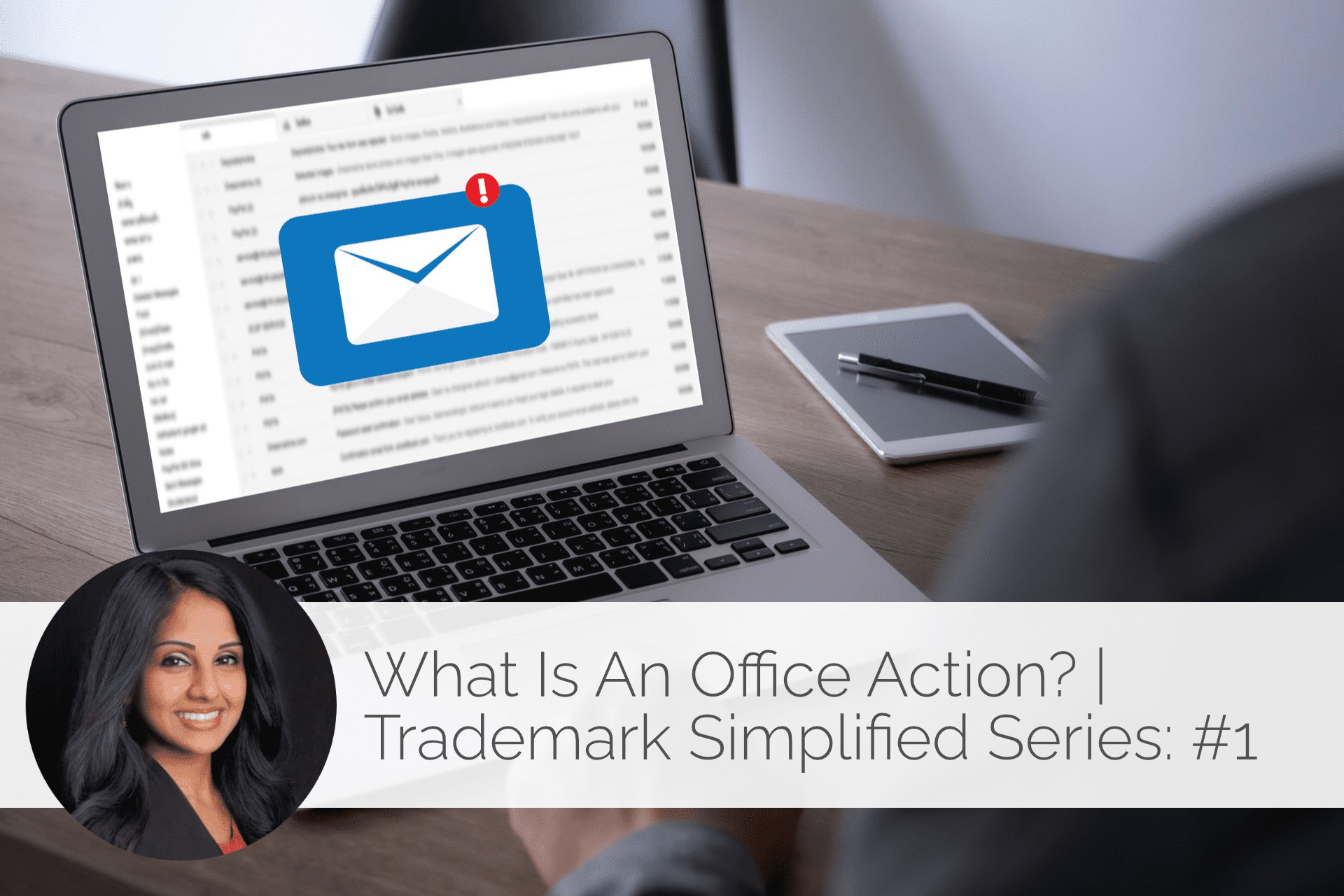I. What is an Office Action?
Submitting a petition for a trademark may not always go according to plan. Sometimes, a business owner may receive a rejection of their trademark application because of a small or severe complication. This is likely because a trademark must be distinct and set apart one business from another. If the United States Patent and Trademark Office (USPTO) determines that a trademark application has administrative or infringement issues, an office action comes into play.
An office action is a form of correspondence sent by the USPTO to an applicant highlighting certain issues that may affect one’s ability to use a trademark. Office actions are sent via mail or email. The purpose of sending such a letter is to detail potential problems hindering the trademark from being approved.
A USPTO examining attorney enumerates the issue(s) and explains why the issue(s) might prevent the trademark from being registered, including potential infringement on an existing mark. A business owner must respond to the office action before the application can proceed. Timeliness and completeness are key to resolving any issues listed in the office action. Responding to office actions quickly, and in a thorough manner can result in the USPTO registering the mark faster.
II. Main Categories of Office Actions
There are two main categories of office actions: non-final office action and final office action. A non-final action simply means that the issues presented by the legal official can be remedied. So, the office action is not the “end” of this trademark application per se. One has six months to respond to a non-final office action. On the other hand, a final office action is a final notice to submit a response or else the application could be deemed abandoned. If an applicant fails to adequately and properly respond to an office action, the application can be denied and the applicant might have to file a new application.
Among these two main categories of office actions, a 2D Refusal is one of the most common. This type of refusal can also be called a “likelihood of confusion” refusal. An examining attorney issues this form of office action when a proposed trademark is similar to an already existing registered trademark and has the potential to cause consumers confusion. The applicant who receives this refusal should respond appropriately by “explaining how [their] trademark (…) [and] goods and services differ from the registered trademarks” and make necessary changes if required.
III. Other Types of Office Actions
There are a few other types of office actions as well, and these range in various levels of severity. An examiner’s amendment office action is not severe because it indicates a relatively small issue. The USPTO indicates that this type of office action is usually used to address small problems that can be “resolved by phone or email.”
A priority action is a letter explaining the legal problems with one’s trademark application that resulted in an office action. These issues are to be “resolved in writing by the applicant” after a discussion with the examining attorney.
A suspension letter, on the other hand, indicates a more severe issue with the applicant’s proposed trademark. When this letter is sent, it means that the application is suspended for an indefinite amount of time until it is further reviewed.
IV. Responding to an Office Action
There are two ways to respond to an office action. Some office actions may require a virtual meeting with the examining attorney in order to resolve the problem. This can be completed in the form of a telephone call. Oftentimes, if the issue is very small, it can be resolved by simply “clarifying goods and services” that the business would provide. These virtual meetings are kept private. If one prefers, he or she can also communicate with the USPTO via email. Written communications with the USPTO are publicly available.
Applicants can also respond to the office action via the online system USPTO called TEAS, or the Trademark Electronic Application System. There are two options for forms in this system. In order for the process to proceed seamlessly, the applicant must pick the form that is relevant to the office action they received.
As stated by the USPTO website, a non-final office action requires the use of the TEAS Response to Office Action Form, whereas a final office action requires a TEAS Request for Reconsideration after Final Action Form. The latter form allows one to appeal a final office action and ask that the USPTO reconsiders their decisions regarding the application. If there is an error or a valid reason that is deemed worthy enough by the USPTO, the finality of the office action will be changed.
Filling out these forms can be a bit confusing. Therefore the USPTO has a video and guide on their website to make filing much easier. There is a list of guidelines as well as to who can sign certain types of forms.
V. Complete Response
It is extremely important to respond properly to an office action. This means that one should “understand all legal problems with [the] application” and respond to these legal problems by “explaining why [he or she] agree[s] or do[es] not agree with [the issues].” Timeliness is also a factor. Responding in a timely manner ensures that one’s application will be examined at the earliest convenience of the USPTO’s examining attorneys. It also makes the completion of the trademarking process more swift. Failure to respond swiftly, or at all, may result in the complete rejection of an application, the inability to use a trademark, or a lengthy filing process. This would also increase any legal fees if the applicant is being represented by an attorney.
VI. Conclusion
Office actions are forms of correspondence that the USPTO sends applicants if there is a legal issue with their trademark application. These correspondences are usually sent as letters and take two forms: non-final and final. There are several other types of office actions as well that deal with other aspects of the filing process. A business owner who receives an office action can respond in different ways. Some office actions can usually be resolved by phone calls. Failure to file in a timely and thorough manner can result in further problems, delays, and even the abandonment/rejection of one’s application.
If you are applying for a trademark and require further assistance, please feel free to contact MDGR Law. We are happy to help.
The republication of this article was made possible by a collaboration between Flock of Legals and Attorney Melissa D. Goolsarran Ramnauth. The original article may be found here: https://www.mdgrlaw.com/post/what-is-an-office-action









